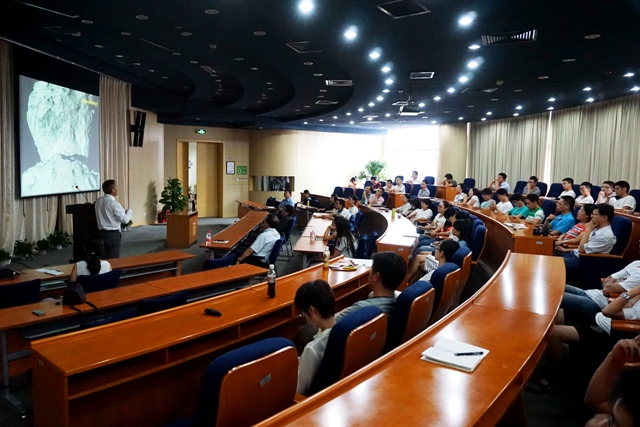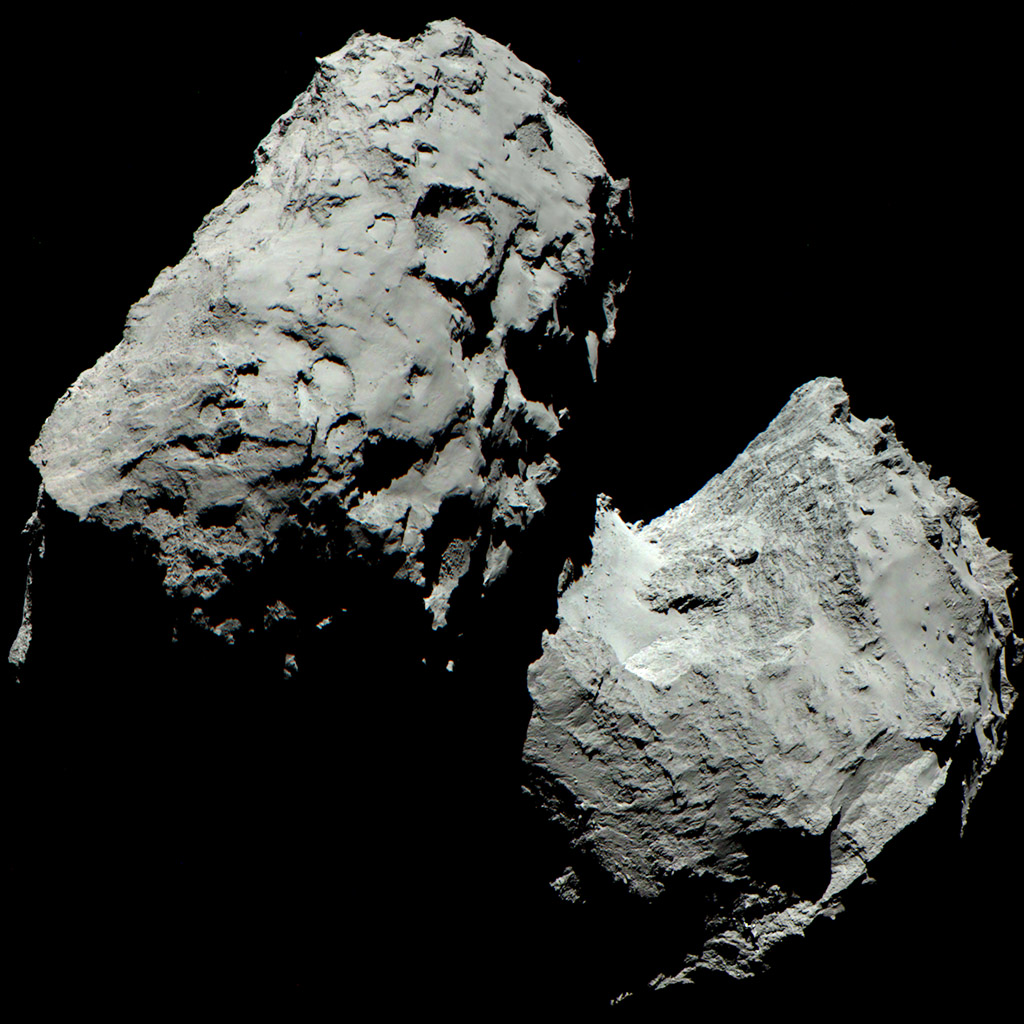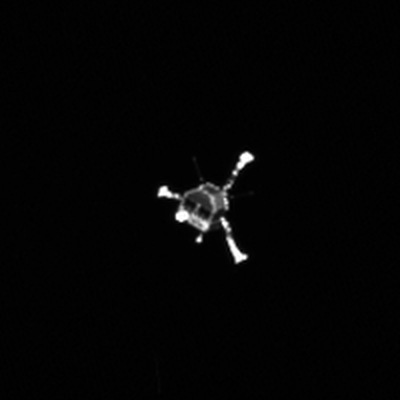Dr. Holger Sierks Visited ISSI-BJ
Dr. Holger Sierks, Rosetta/OSIRIS Principal Investigator, Visited ISSI-BJ
The German scientist Dr. Holger Sierks, based at the Max-Planck-Institute for Solar System Research in G?ttingen, Germany visited the International Space Science Institute in Beijing and gave an impressive talk on the current goals and successes of the ESA mission Rosetta. He updated the audience about the whereabouts of lander Philae and showed remarkable images of Comet 67P/Churyumov-Gerasimenko and its sorroundings taken by the onboard camera OSIRIS. The talk was given at the National Space Science Center on August 18.

The Rosetta mission of the European Space Agency arrived on August 6, 2014, at the target comet 67P/Churyumov-Gerasimenko. OSIRIS (Optical, Spectroscopic, and Infrared Remote Imaging System) is the scientific imaging system onboard Rosetta. OSIRIS consists of a Narrow Angle Camera (NAC) for the nucleus surface and dust studies and a Wide Angle Camera (WAC) for the wide field gas and dust coma investigations.
OSIRIS imaged the nucleus and the coma of comet 67P/C-G during approach, arrival, and descent of the Philae lander. OSIRIS continued monitoring and mapping the surface and activity in escort phase in 2015 with close fly-bys and remote observations.
The scientific results reveal a nucleus with bi-lobed shape and varied morphology. Active regions are located at steep cliffs and collapsed pits which form collimated gas jets. Dust is accelerated, forming jet filaments and the large scale, diffuse coma of the comet.

